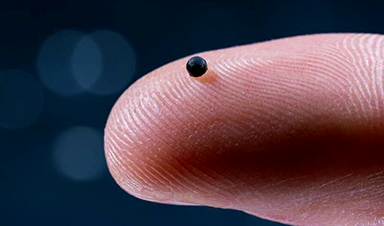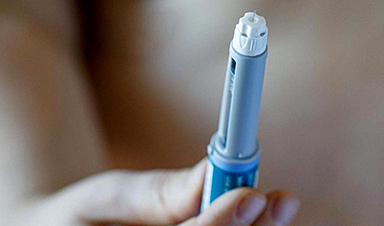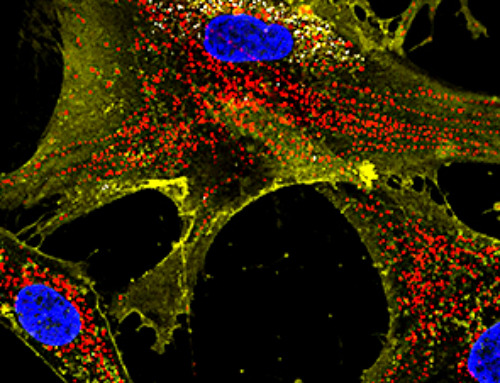An insidious illness is taking hold among a growing proportion of young people. Little known to the general public, peniaphobia—the fear of becoming poor—is gaining ground among teens and young adults. Discover the causes and implications of this phenomenon.
A generation under constant pressure
Behind this still little-publicized term lies a very real, often paralyzing, anxiety that affects a generation already weakened by economic, social, and psychological uncertainties. Peniaphobia, once a marginal issue, is now being discussed by specialists and relayed in the media, as its effects become more visible. It can lead to chronic stress, eating disorders, insomnia, and even a worrying withdrawal.
The rise of peniaphobia cannot be understood without considering the context in which it occurs. Since the Covid-19 pandemic, many young people have been brutally confronted with precariousness: student jobs lost, difficulties paying rent, and recourse to food banks. These experiences have left lasting scars, notably a feeling of economic vulnerability that some are no longer able to assuage.
The pressure is also psychological and cultural, fueled by dominant discourses on success, failure, and performance. "It's this race for success that conditions everything. As if not being able to be first calls their entire life into question," child psychiatrist Marie-Rose Moro recently explained in La Croix.
The anxiety-inducing role of social networks
Social media platforms also play a major role in spreading this anxiety. On Instagram, TikTok, and Snapchat, the most popular content depicts idealized lives: dream vacations, luxury outfits, immaculate apartments, dazzling professional success… A lifestyle that seems out of reach for many, fueling feelings of failure or inferiority.
For some young people, this translates into a constant fear of "failing in life" if they don't quickly achieve a certain level of material comfort. The constant comparison, combined with fear of the economic future, makes peniaphobia a breeding ground for mental distress.
Varied and disabling symptoms
Peniaphobia doesn't always manifest itself in visible crises. It can be insidious, rooted in daily habits. Some young people avoid spending a single cent, live extremely frugally, and refuse to go out or take on projects for fear of "mortgaging" their future. Others develop behavioral problems, ranging from generalized anxiety to eating disorders and even depression.
In the most severe cases, this fear takes the form of a true obsession, accompanied by intrusive thoughts or somatic disorders: headaches, chronic fatigue, palpitations. The feeling of constant urgency prevents any calm projection into the future.
How can we allay this fear of being downgraded?
There is no single solution, but several avenues can help reduce the impact of peniaphobia on daily life.
- Regain control over your breathing and thoughts. Breathing exercises or meditation can help manage anxiety spikes. At the same time, cognitive reconstruction work, such as learning to replace catastrophic thoughts with positive alternatives, can be beneficial.
- Disconnect from social injunctions. Remembering that social media doesn't reflect reality is an essential exercise. Every journey is different, and the apparent success of others is often the result of carefully calibrated staging.
- Respect your personal pace. Success doesn't follow a single timetable. It's important to restore the value of slowness, progress, and development. This also helps reduce the unnecessary pressure many young people place on themselves.
- Seek professional help. In the most severe cases, consulting a psychologist or psychiatrist can help you put your anxiety into words, understand its origins, and develop appropriate support.
The emergence of peniaphobia among young people must therefore be considered a warning signal. It reveals a deep unease about a future perceived as uncertain, unstable, and threatening. It also testifies to the psychological impact of the models of success conveyed by our societies.
News
Multifunctional Nanogels: A Breakthrough in Antibacterial Strategies
Antibiotic resistance is a growing concern - from human health to crop survival. A new study successfully uses nanogels to target and almost entirely inhibit the bacteria P. Aeruginosa. Recently published in Angewandte Chemie, the study [...]
Nanoflowers rejuvenate old and damaged human cells by replacing their mitochondria
Biomedical researchers at Texas A&M University may have discovered a way to stop or even reverse the decline of cellular energy production—a finding that could have revolutionary effects across medicine. Dr. Akhilesh K. Gaharwar [...]
The Stunning New Push to Protect the Invisible 99% of Life
Scientists worldwide have joined forces to build the first-ever roadmap for conserving Earth’s vast invisible majority—microbes. Their new IUCN Specialist Group reframes conservation by elevating microbial life to the same urgency as plants and [...]
Scientists Find a Way to Help the Brain Clear Alzheimer’s Plaques Naturally
Scientists have discovered that the brain may have a built-in way to fight Alzheimer’s. By activating a protein called Sox9, researchers were able to switch on star-shaped brain cells known as astrocytes and turn them into [...]
Vision can be rebooted in adults with amblyopia, study suggests
Temporarily anesthetizing the retina briefly reverts the activity of the visual system to that observed in early development and enables growth of responses to the amblyopic eye, new research shows. In the common vision [...]
Ultrasound-activated Nanoparticles Kill Liver Cancer and Activate Immune System
A new ultrasound-guided nanotherapy wipes out liver tumors while training the immune system to keep them from coming back. The study, published in Nano Today, introduces a biodegradable nanoparticle system that combines sonodynamic therapy and cell [...]
Magnetic nanoparticles that successfully navigate complex blood vessels may be ready for clinical trials
Every year, 12 million people worldwide suffer a stroke; many die or are permanently impaired. Currently, drugs are administered to dissolve the thrombus that blocks the blood vessel. These drugs spread throughout the entire [...]
Reviving Exhausted T Cells Sparks Powerful Cancer Tumor Elimination
Scientists have discovered how tumors secretly drain the energy from T cells—the immune system’s main cancer fighters—and how blocking that process can bring them back to life. The team found that cancer cells use [...]
Very low LDL-cholesterol correlates to fewer heart problems after stroke
Brigham and Women's Hospital's TIMI Study Group reports that in patients with prior ischemic stroke, very low achieved LDL-cholesterol correlated with fewer major adverse cardiovascular events and fewer recurrent strokes, without an apparent increase [...]
“Great Unified Microscope” Reveals Hidden Micro and Nano Worlds Inside Living Cells
University of Tokyo researchers have created a powerful new microscope that captures both forward- and back-scattered light at once, letting scientists see everything from large cell structures to tiny nanoscale particles in a single shot. Researchers [...]
Breakthrough Alzheimer’s Drug Has a Hidden Problem
Researchers in Japan found that although the Alzheimer’s drug lecanemab successfully removes amyloid plaques from the brain, it does not restore the brain’s waste-clearing system within the first few months of treatment. The study suggests that [...]
Concerning New Research Reveals Colon Cancer Is Skyrocketing in Adults Under 50
Colorectal cancer is striking younger adults at alarming rates, driven by lifestyle and genetic factors. Colorectal cancer (CRC) develops when abnormal cells grow uncontrollably in the colon or rectum, forming tumors that can eventually [...]
Scientists Discover a Natural, Non-Addictive Way To Block Pain That Could Replace Opioids
Scientists have discovered that the body can naturally dull pain through its own localized “benzodiazepine-like” peptides. A groundbreaking study led by a University of Leeds scientist has unveiled new insights into how the body manages pain, [...]
GLP-1 Drugs Like Ozempic Work, but New Research Reveals a Major Catch
Three new Cochrane reviews find evidence that GLP-1 drugs lead to clinically meaningful weight loss, though industry-funded studies raise concerns. Three new reviews from Cochrane have found that GLP-1 medications can lead to significant [...]
How a Palm-Sized Laser Could Change Medicine and Manufacturing
Researchers have developed an innovative and versatile system designed for a new generation of short-pulse lasers. Lasers that produce extremely short bursts of light are known for their remarkable precision, making them indispensable tools [...]
New nanoparticles stimulate the immune system to attack ovarian tumors
Cancer immunotherapy, which uses drugs that stimulate the body’s immune cells to attack tumors, is a promising approach to treating many types of cancer. However, it doesn’t work well for some tumors, including ovarian [...]





















